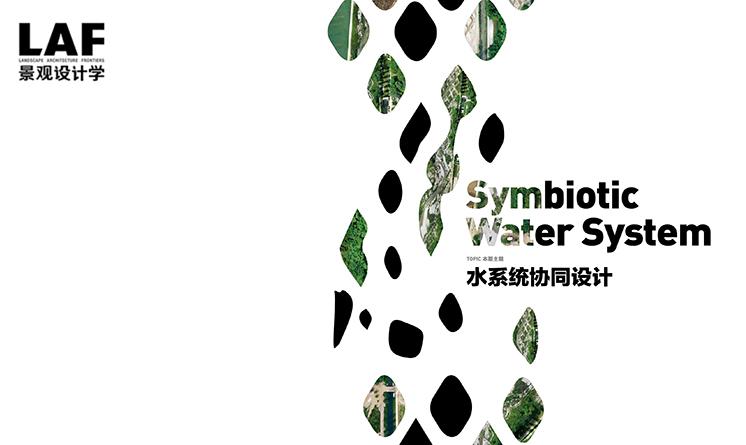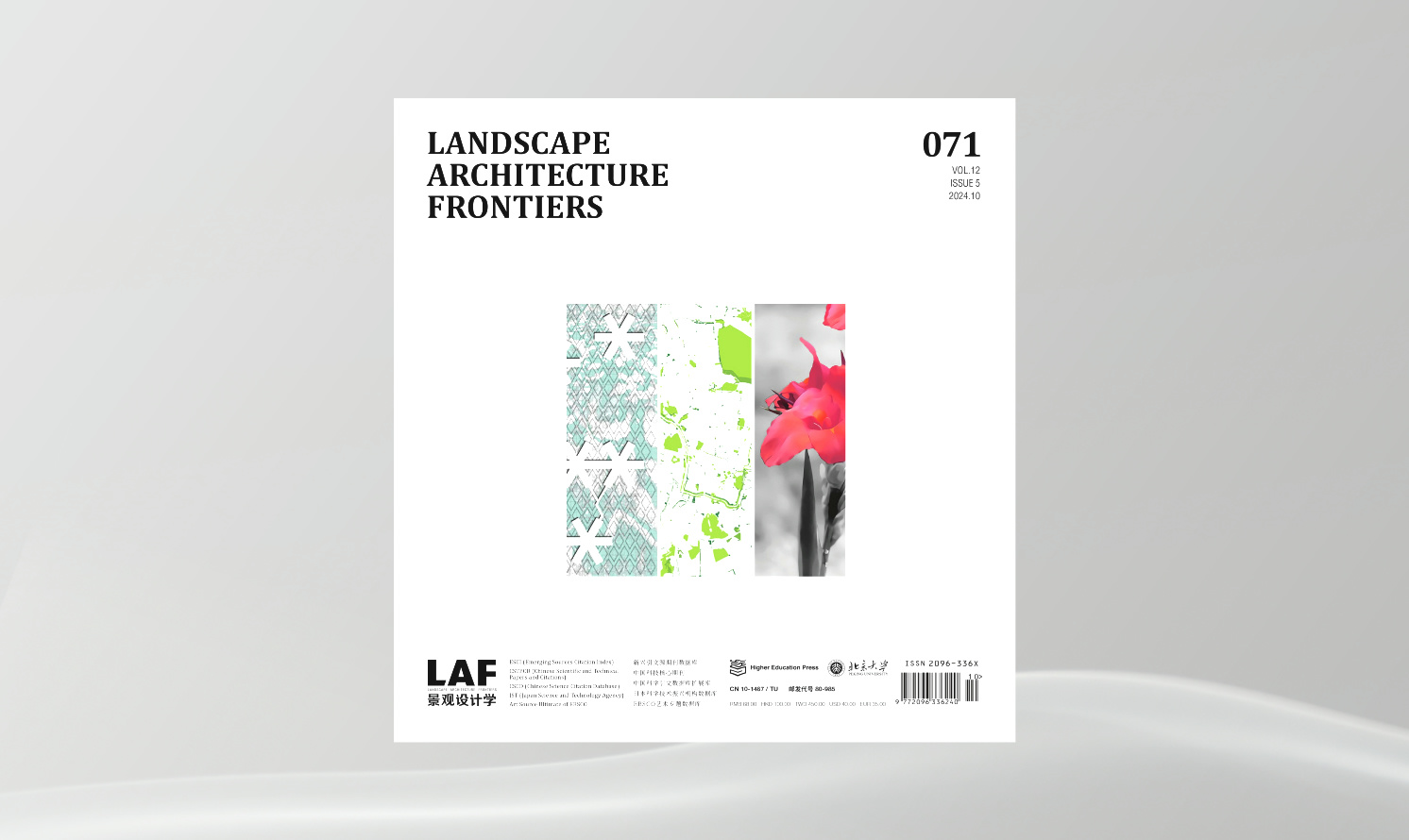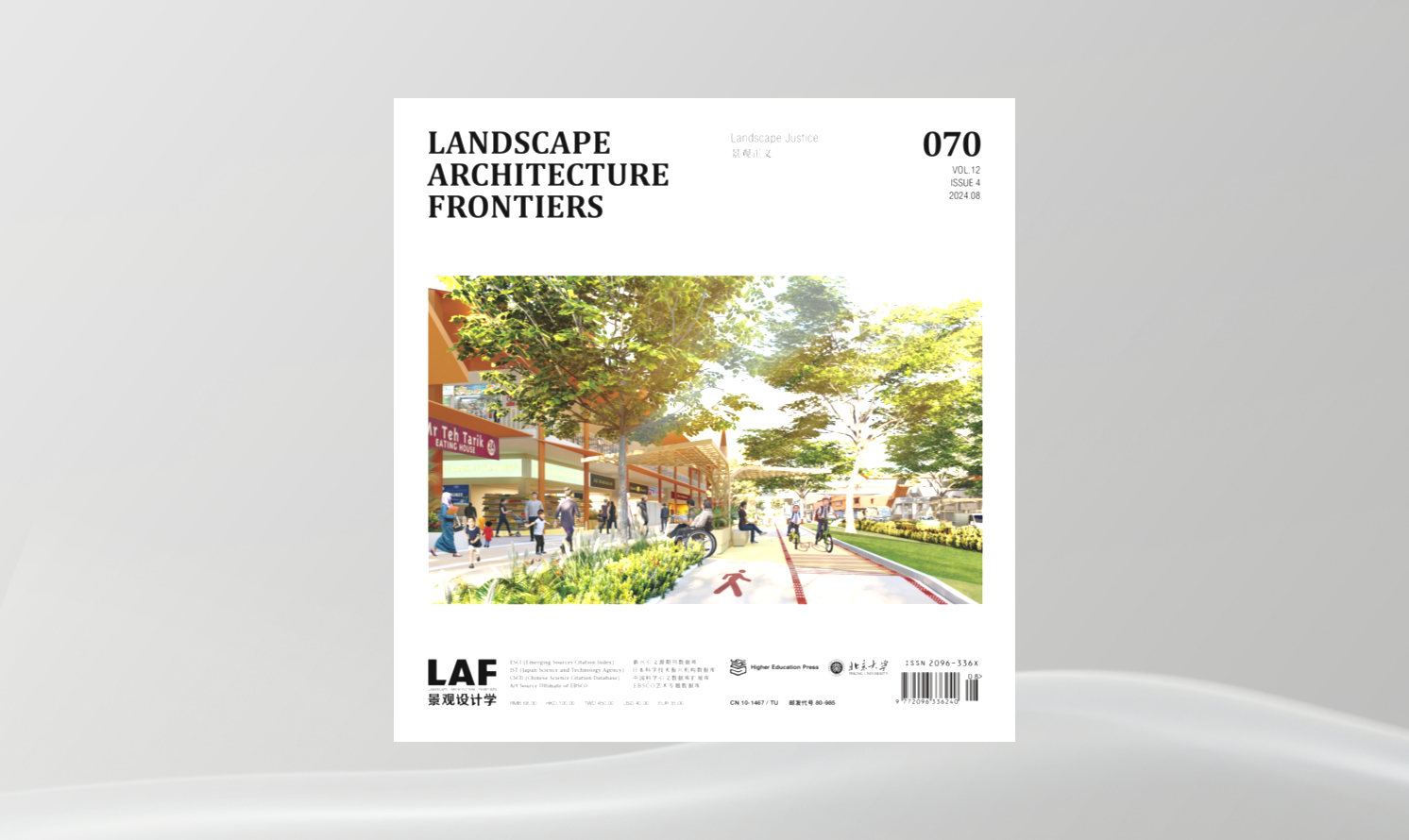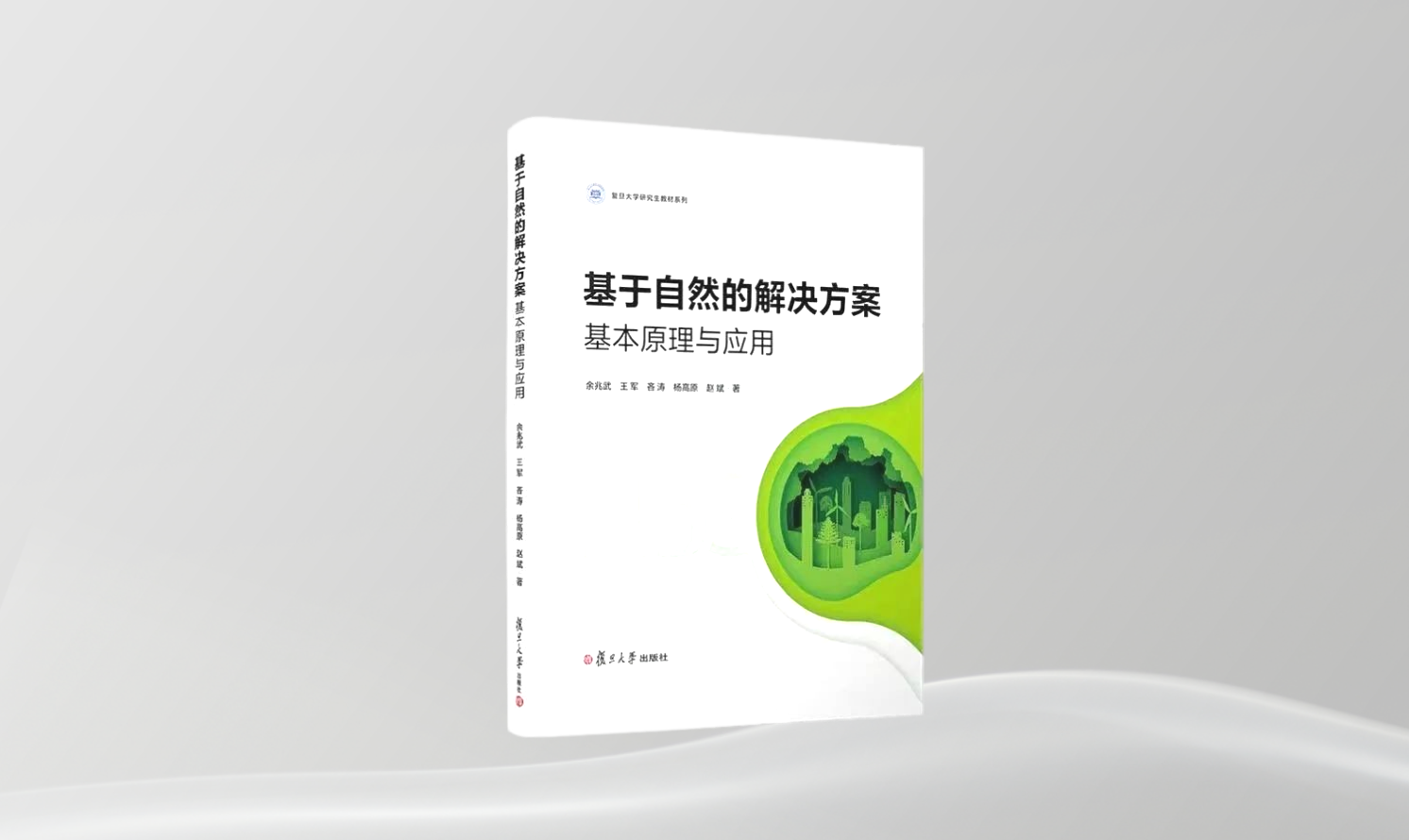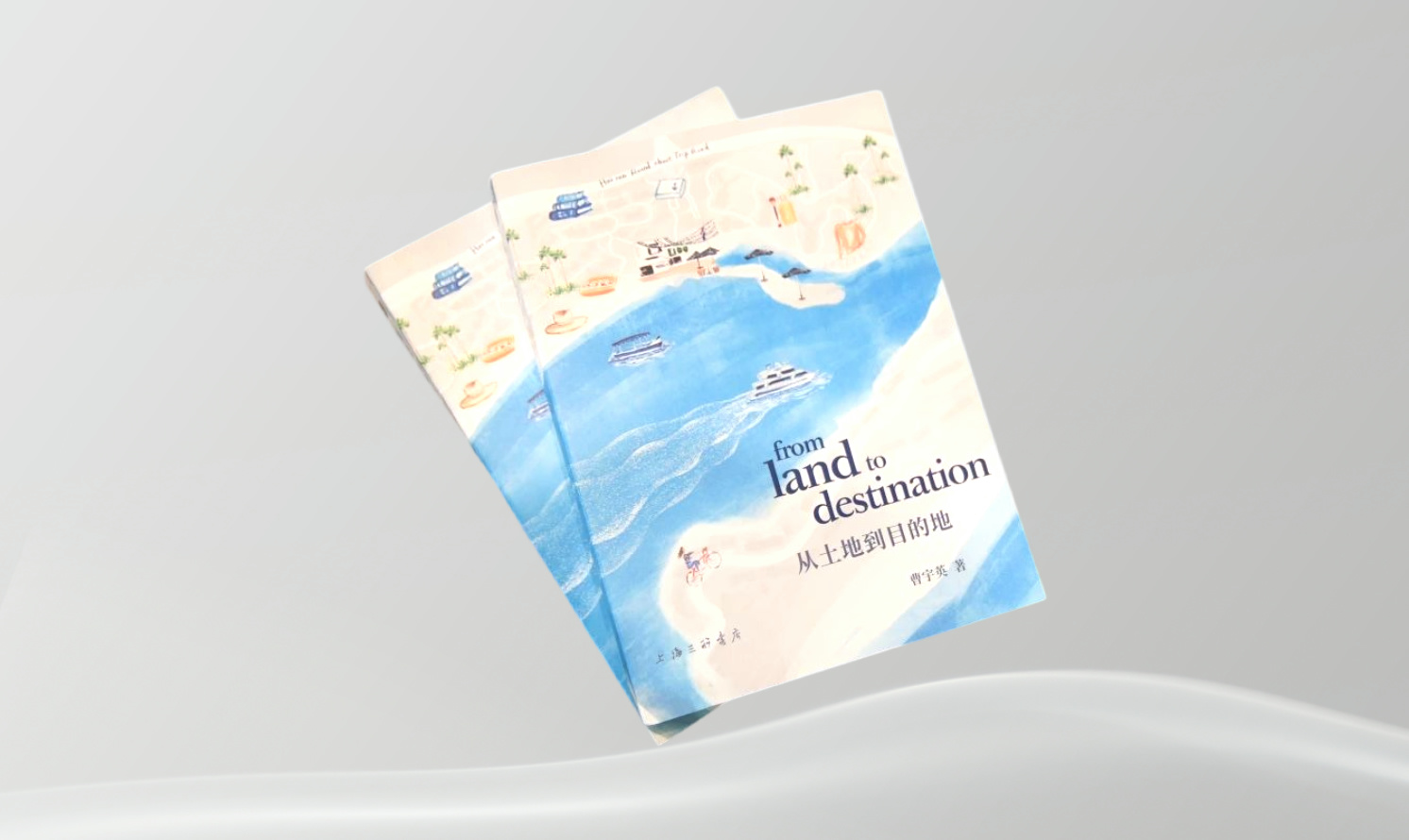適應(yīng)水位變化的多功能基塘系統(tǒng):塘生態(tài)智慧在三峽水庫(kù)消落帶生態(tài)恢復(fù)中的運(yùn)用
Multi-Functional Dike-Pond System Adaptive to Water Level Change: Application of Pond-Based Ecological Wisdom in Ecological Restoration of the Hydro-Fluctuation Belt of the Three Gorges Reservoir
作者:袁興中�,杜春蘭,袁嘉 Xingzhong YUAN, Chunlan DU, Jia YUAN
摘要
自然界有許多大小不一��、形態(tài)各異的塘�,具有多種多樣的生態(tài)服務(wù)功能。在傳統(tǒng)農(nóng)耕時(shí)代�,勞動(dòng)人民創(chuàng)造了各種塘系統(tǒng),如陂塘�、多塘系統(tǒng)、?����;~塘等����,它們發(fā)揮了儲(chǔ)蓄水分、控制雨洪����、凈化污染、調(diào)節(jié)微氣候�����、提供生物棲息地等多種生態(tài)服務(wù)功能。如今�,在全球氣候變化及人類活動(dòng)的干擾下,地表水資源短缺����、水環(huán)境污染及水生態(tài)失調(diào)等問(wèn)題日益嚴(yán)重。如何應(yīng)對(duì)不斷變化的環(huán)境����,進(jìn)行有效的生態(tài)恢復(fù)及景觀建設(shè)?我們不僅需要從自然塘系統(tǒng)中獲取靈感����,更需要從傳統(tǒng)文化遺產(chǎn),如各種塘系統(tǒng)的生態(tài)智慧中汲取營(yíng)養(yǎng)����。多功能基塘系統(tǒng)是應(yīng)對(duì)環(huán)境變化、優(yōu)化生態(tài)服務(wù)功能的重要手段����。本文在闡明自然界塘的組成����、結(jié)構(gòu)和功能的基礎(chǔ)上�,發(fā)掘傳統(tǒng)鄉(xiāng)村各種塘系統(tǒng)的生態(tài)智慧�,結(jié)合長(zhǎng)江三峽水庫(kù)消落帶多功能基塘的設(shè)計(jì)與實(shí)踐案例,探討塘生態(tài)智慧在具有季節(jié)性水位變化的水庫(kù)消落帶的生態(tài)恢復(fù)和景觀優(yōu)化中的運(yùn)用�。
關(guān)鍵詞
塘;生態(tài)智慧����;多功能基塘系統(tǒng);消落帶��;三峽水庫(kù)
Abstract
There are many ponds with different sizes and shapes in nature, providing a variety of ecological services. In the era of traditional farming, people created pond systems with ecological wisdom, such as Beitang ponds, multi-pond system, mulberry-based dike fish pond, etc., which perform ecological functions including water storage, stormwater regulation, pollution purification, micro-climate adjustment, and habitat provision. Due to global climate change and human interference, problems such as the surface water shortage, water pollution and water ecosystem destruction are becoming more and more serious. To deal with the changing environment, restore ecology, and construct landscape effectively, we not only could be inspired by the natural pond system, but also need to learn from the traditional cultural heritage, such as the ecological wisdom of the various pond systems. The multi-functional dike pond system plays an important role in dealing with the environmental changes and optimizing the ecological services. On the basis of clarifying the composition, structure and function of ponds in nature, this article explores the ecological wisdom of the pond systems in traditional villages, taking the design and practices of the Three Gorges Reservoir as an example to discuss the application of the multi-functional dike pond in the ecological restoration and landscape optimization of the hydro-fluctuation belt with seasonal water level fluctuation.
Key words
Ponds; Ecological Wisdom; Multi-Functional Dike-Pond System; Hydro-Fluctuation Belt; The Three Gorges Reservoir
通過(guò)“場(chǎng)地可持續(xù)性設(shè)計(jì)行動(dòng)計(jì)劃”評(píng)級(jí)體系推動(dòng)綠色基礎(chǔ)設(shè)施與生態(tài)系統(tǒng)服務(wù)發(fā)展
Advancing Green Infrastructure and Ecosystem Services through the SITES Rating System
作者:丹妮爾·皮耶拉農(nóng)齊�����,弗雷德里克·R·斯坦納����,蘇姍·里夫 Danielle PIERANUNZI, Frederick R. STEINER, Susan RIEFF
摘要
在創(chuàng)建高效的交通系統(tǒng),減少城市熱島效應(yīng)��,滿足人們對(duì)潔凈水源����、空氣和開(kāi)放空間不斷增長(zhǎng)的需求,以及保護(hù)野生動(dòng)物棲息地等方面,世界各地的城市和社區(qū)正面臨越來(lái)越艱巨的挑戰(zhàn)��。綠色建筑實(shí)踐可以通過(guò)能源和節(jié)水技術(shù)緩解這些方面的壓力��。人類在土地上建造的構(gòu)筑物�,深刻地影響著生態(tài)系統(tǒng)以及社區(qū)的健康、安全和福祉����。場(chǎng)地可持續(xù)性設(shè)計(jì)行動(dòng)計(jì)劃?(SITES?)的提出基于以下認(rèn)知:景觀是建成環(huán)境中的一個(gè)關(guān)鍵元素,人們可通過(guò)設(shè)計(jì)和維護(hù)景觀���,來(lái)避免��、減輕甚至扭轉(zhuǎn)人類發(fā)展和氣候變化帶來(lái)的不利影響�。與通常會(huì)隨時(shí)間推移而貶值的建筑物不同��,可持續(xù)景觀通過(guò)持續(xù)提供多種效益(如雨洪管理�����、資源集約����、污染治理���,以及改善人類健康和福祉)而增值�。無(wú)論其所在的場(chǎng)地是都市廣場(chǎng)、城市公園��、大學(xué)校園還是公司總部���,景觀都能作為生態(tài)彈性場(chǎng)所��,更好地抵御偶發(fā)性洪水�、干旱���、野火及其他災(zāi)難���,并從中迅速恢復(fù)。相較于傳統(tǒng)的場(chǎng)地設(shè)計(jì)實(shí)踐�����,使用了生態(tài)系統(tǒng)服務(wù)框架的SITES評(píng)級(jí)體系是一種更為有效的替代方法����。
關(guān)鍵詞
場(chǎng)地可持續(xù)性設(shè)計(jì)行動(dòng)計(jì)劃;可持續(xù)性;彈性����;氣候變化;生態(tài)系統(tǒng)服務(wù)
Abstract
Cities and communities around the world face increasingly difficult challenges in creating efficient transit systems, reducing urban heat island effects, and addressing the ever-rising demand for clean water and air, open space, and wildlife habitat. Green building practices can alleviate many of these pressures through energy, and water conserving technologies. However, what is built on the land profoundly impacts ecological systems as well as the health, safety, and welfare of communities. The Sustainable SITES Initiative? (SITES?) is based on the understanding that landscapes are a crucial element of the built environment and can be designed and maintained to avoid, mitigate, and even reverse the common detrimental impacts of development and climate change. Unlike buildings that typically depreciate over time, sustainable landscapes appreciate in value by continuing to provide multiple benefits such as managing stormwater, conserving resources, reducing pollution, and improving human health and well-being. Whether the site is an urban plaza, city park, university campus, or corporate headquarters, landscapes can be ecologically resilient places better able to withstand and recover from episodic floods, droughts, wildfires, and other catastrophic events. Using an ecosystem services framework, the SITES Rating System is presented as an alternative and more effective approach to conventional site-design practices.
Key words
SITES; Sustainability; Resilience; Climate Change; Ecosystem Services
協(xié)同合作緩解中國(guó)水資源問(wèn)題
Collaborative Strategies to Alleviate China's Water Resource Problems
作者:王浩 Hao WANG
摘要
我國(guó)水資源面臨著供需矛盾突出����、水旱災(zāi)害頻發(fā)�����、水污染嚴(yán)重、水生態(tài)系統(tǒng)退化等嚴(yán)峻問(wèn)題�����。這些問(wèn)題的解決需要仰賴多學(xué)科����、多領(lǐng)域的研究合作,以及跨行業(yè)��、跨部門的協(xié)同工作��。與水資源研究相關(guān)的各個(gè)專業(yè)應(yīng)采用協(xié)同創(chuàng)新的模式推進(jìn)彼此間的有效溝通���,注重從理論上交互融合���、從方法上協(xié)作借鑒���,深入開(kāi)展不同學(xué)科間的交流����。通過(guò)對(duì)目前廣泛開(kāi)展的海綿城市建設(shè)工作進(jìn)行評(píng)述,作者指出應(yīng)在政策法規(guī)�����、技術(shù)標(biāo)準(zhǔn)�、體制機(jī)制等方面推動(dòng)海綿城市建設(shè)中的協(xié)同。
關(guān)鍵詞
水資源�����;海綿城市�����;協(xié)同�;生態(tài)海綿流域
Abstract
China’s water resources are facing serious problems including uneven supply and demand, frequent droughts and floods, severe water pollution, and water ecosystem degradation. To solve these problems, multi-disciplinary and multi-field research cooperation, as well as multi-professional and multi-departmental collaboration are required. The different disciplines that study water resources should adopt new collaborative models that promote effective communication between professionals, and that focus on interactive integration in theory and methodology to achieve disciplinary exchange. A thorough review of Sponge City programs draws attention to policies, regulations, technical standards, and institutional mechanisms needed for this exchange.
Key words
Water Resources; Sponge City; Collaboration; Ecological Sponge River Basin
結(jié)合科學(xué)與社會(huì)方法的河流修復(fù):訪談G·馬蒂亞斯·康道夫
Combining Scientific and Social Methods in River Restoration: An Interview with G. Mathias Kondolf
作者:G·馬蒂亞斯·康道夫��,史書菡 G. Mathias KONDOLF, Shuhan SHI
摘要
本次訪談聚焦于美國(guó)河流生態(tài)修復(fù)的教育和實(shí)踐���,及其對(duì)中國(guó)的借鑒意義。G·馬蒂亞斯·康道夫介紹了他在加州大學(xué)伯克利分校的教學(xué)和研究�����,闡述了對(duì)水壩建設(shè)的看法���,并提出了河流修復(fù)的幾大原則�。另一位對(duì)話者史書菡在中國(guó)的語(yǔ)境下提出了與該主題相關(guān)的主要問(wèn)題�����。本次訪談旨在通過(guò)全新視角���,為研究者和實(shí)踐者提供解決中國(guó)水問(wèn)題的思路����,為景觀設(shè)計(jì)師和規(guī)劃師未來(lái)的研究和實(shí)踐提供整合科學(xué)與社會(huì)方法的新理念�����。
關(guān)鍵詞
河流修復(fù);水壩建設(shè)�����;沉積物��;非點(diǎn)源污染�;使用后評(píng)價(jià)
Abstract
This interview focuses on discussion of education and practice in river restoration in the United States and its possible lessons for China. G. Mathias Kondolf introduces his teaching and research at University of California, Berkeley and gives his views on dam construction and the principles of river restoration. Shuhan Shi, the interviewer, puts forward several important questions related to the topic within Chinese contexts. Together, through a fresh perspective, this work could help researchers and practitioners to consider ways to solve water problems in China. For landscape architects and planners, it provides new perceptions to combine scientific and social methods for future research and practice.
Key words
River Restoration; Dam Construction; Sediment; Non-Point Source Pollution; Post-Occupancy Evaluation
協(xié)同設(shè)計(jì)與創(chuàng)新管理——溫嶺東部新區(qū)海綿城市建設(shè)經(jīng)驗(yàn)談
Collaborative Design and Innovative Management — The Experience of Sponge City Development in the Eastern New District of Wenling City
作者:佘依爽 Yishuang SHE
摘要
如何因地制宜地落實(shí)國(guó)務(wù)院辦公廳于2015年10月印發(fā)的《關(guān)于推進(jìn)海綿城市建設(shè)的指導(dǎo)意見(jiàn)》,是現(xiàn)階段海綿城市建設(shè)的熱點(diǎn)問(wèn)題�。浙江省溫嶺市東部新區(qū)自2010年啟動(dòng)城市建設(shè)實(shí)踐起�����,即率先形成了以“水”為核心的綠色基礎(chǔ)設(shè)施雛形�,搭建了完整的城市生態(tài)建設(shè)框架,系統(tǒng)地在全區(qū)域范圍內(nèi)進(jìn)行了多維度的雨洪管理實(shí)踐����。本文采訪并總結(jié)了開(kāi)發(fā)方、城市管理機(jī)構(gòu)���、施工方����、景觀設(shè)計(jì)師等與該地海綿城市建設(shè)直接相關(guān)人群的實(shí)踐經(jīng)驗(yàn)與心路歷程,得出優(yōu)先規(guī)劃綠色基礎(chǔ)設(shè)施����、敢為人先的突破性理念、系統(tǒng)化的解決方案����,以及執(zhí)行到位的精細(xì)化管理是項(xiàng)目實(shí)施效果較好的基本原因。
關(guān)鍵詞
海綿城市建設(shè)��;綠色基礎(chǔ)設(shè)施��;協(xié)同設(shè)計(jì)�����;管理
Abstract
In current sponge city development, the question of how to implement plans according to local circumstances and the Guiding Opinions on Promoting Sponge City Development, issued in October 2015 by the State Council, has become a hot topic. Starting with urban development in 2010, the Eastern New District of Wenling City, Zhejiang Province has taken the lead in building an early phase of green infrastructure that centers on “water” to establish a complete framework of urban ecological development and carry out various practices of city-wide stormwater management systematically. This article summarizes the practical experiences and conceptual procedures of developers, urban administrative agencies, contractors, landscape architects, and other people who are directly related to the development of this sponge city. It is believed that the prioritized planning of green infrastructure, the boldness to be a pioneer, the systematic solutions, and the proper execution of tactful management are the fundamental reasons for the successful implementation results.
Key words
Sponge City Development; Green Infrastructure; Collaborative Design; Management
城市水體生態(tài)修復(fù)與景觀設(shè)計(jì)的協(xié)同營(yíng)建
Collaborative Establishment of Urban Water Ecological Restoration and Landscape Architecture
作者:張飲江���,李鳳瑩�,吳文明 Yingjiang ZHANG, Fengying LI, Wenming WU
摘要
城市水系承擔(dān)著提供水資源����、發(fā)揮生態(tài)效應(yīng)、承載城市生活等多種功能�。通過(guò)城市水系設(shè)計(jì)能夠優(yōu)化水資源的時(shí)空分布��,改善水文循環(huán)并提升水質(zhì)���,對(duì)城市生態(tài)系統(tǒng)而言有著重要意義。本文旨在探討如何在最大限度地保護(hù)原有水生態(tài)系統(tǒng)的基礎(chǔ)上�����,修復(fù)受損水生態(tài)�����,恢復(fù)城市水系綜合功能���,從而讓城市彈性適應(yīng)環(huán)境變化和自然災(zāi)害,同時(shí)提升水域周邊土地價(jià)值與美學(xué)價(jià)值����。作者從水陸交錯(cuò)帶營(yíng)建、水生生物的共生關(guān)系�、水生生物生境營(yíng)建等方面展開(kāi)了討論。
關(guān)鍵詞
城市水體�����;生態(tài)修復(fù);水系設(shè)計(jì)�;景觀設(shè)計(jì)
Abstract
Urban water systems fulfill a variety of purposes, such as providing water resources, performing ecological functions, and supporting city life. The design of urban water systems optimizes the spatial and temporal distribution of water resources, improves the hydrographic circulation and water quality, bringing important influences to the urban ecosystem. This article aims to discuss how to maximize the protection of the original aquatic ecosystem, the repair of damaged water ecology, and the restoration of urban water system functions so as to endow the city with resilience to adapt to environmental changes and natural disasters, while enhancing the economic and aesthetic value of the land adjacent to water. A general discussion is provided on the establishment of water-land ecotones, symbiosis of aquatic organisms, and establishment of aquatic habitat.
Key words
Urban Water body; Ecological Restoration; Water System Design; Landscape Architecture
設(shè)計(jì)一處河流花園——瑞士日內(nèi)瓦艾爾河修復(fù)
Designing a Rivergarden —— Renaturation of River Aire, Geneva, Switzerland
作者:Superpositions集團(tuán) Group Superpositions
摘要
在一處自古就用于農(nóng)業(yè)生產(chǎn)的山谷中,艾爾河靜靜流過(guò)����。自19世紀(jì)末起,其被逐步開(kāi)鑿為運(yùn)河�。2001年,日內(nèi)瓦市政府舉辦了一場(chǎng)競(jìng)賽�,旨在拆除渠化運(yùn)河,使艾爾河恢復(fù)最初的形貌��。我們卻提出將運(yùn)河與開(kāi)闊的河流改道空間相結(jié)合���,并將新河床與昔日運(yùn)河中的一系列花園聯(lián)系起來(lái)�。整個(gè)設(shè)計(jì)最終呈現(xiàn)為一個(gè)線性花園����,其將環(huán)境、視野與現(xiàn)狀組織起來(lái)�����。而運(yùn)河的痕跡則是構(gòu)建必要的寧?kù)o氛圍和內(nèi)在價(jià)值的關(guān)鍵元素。
我們提出一種啟動(dòng)形態(tài)��,這種形態(tài)強(qiáng)調(diào)河流流線與現(xiàn)有地形之間的相互作用���?�;跐B流原理���,我們以一組菱形圖案為基礎(chǔ),為水流開(kāi)鑿出一系列復(fù)雜而流向不定的河道��。河水的流動(dòng)帶動(dòng)了各種材料�、碎石和沙子的位移,最初的菱形幾何矩陣也轉(zhuǎn)變?yōu)闃O其多樣的河流地貌����。
關(guān)鍵詞
河流花園;疊加�;啟動(dòng)形態(tài)�����;運(yùn)河的痕跡
Abstract
The River Aire flows through valleys historically devoted to farming. From late 19th century, it was progressively canalized. In 2001, State of Geneva opened a competition with the idea of restoring the river to its original shape by destroying the canal. We instead proposed to combine the canal with a vast divagation space for the river and associate the new riverbed and a series of gardens in the former canal. The whole design becomes a linear garden that organizes situations, views, and presences. The canal footprint is a key device for building the necessary calm and interiority.
We proposed a launching pattern whose form addresses the play between the river flow and the prepared terrain. This diamond-shape diagram based on the percolation principle opens a complex series of undetermined channels for the flows. The river flows displacing diverse materials, gravels, sand and the initial geometrical matrix of lozenges gives birth to an extreme diversity of the fluvial geomorphology.
Key words
Rivergarden; Superpositions; Launching Pattern; Canal Footprint
悉尼公園水資源再利用項(xiàng)目
Sydney Park Water Re-Use Project
作者:Turf設(shè)計(jì)與環(huán)境事務(wù)所 Turf Design Studio & Environmental Partnership
摘要
該項(xiàng)目作為“悉尼2030可持續(xù)發(fā)展戰(zhàn)略規(guī)劃”的重要組成部分���,是悉尼市迄今為止最大的環(huán)境保護(hù)工程��。項(xiàng)目旨在通過(guò)在本地蓄水并將之再利用的方式來(lái)滿足用水需求�。城市從而抓住了一次千載難逢的機(jī)會(huì),以基礎(chǔ)設(shè)施工程為載體�,賦予公園以新的生機(jī)。
關(guān)鍵詞
景觀設(shè)計(jì)�;水資源管理;綠色基礎(chǔ)設(shè)施���;可持續(xù)性���;協(xié)作
Abstract
This project forms City of Sydney’s largest environmental project to date and an integral component of Sustainable Sydney 2030. It targets water demand to be met through local water capture and re-use. The City seized a once in a lifetime opportunity to use what was essentially an infrastructure project as a vehicle to breathe new life into the park.
Key words
Landscape Architecture; Water Management; Green Infrastructure; Sustainability; Collaboration
常德市穿紫河流域生態(tài)治理實(shí)踐
Practice of Ecological Management in the Chuanzi River Basin, Changde City
作者:彭赤焰,羅帕·格羅特瓦��,鄭能師����,楊昶 Chiyan PENG, Rob GROTEWAL, Nengshi ZHENG, Chang YANG
摘要
針對(duì)常德市穿紫河的黑臭水體問(wèn)題,項(xiàng)目以恢復(fù)可持續(xù)的自然水循環(huán)系統(tǒng)為原則���,以改善水質(zhì)�、創(chuàng)造生態(tài)水環(huán)境為目標(biāo)�����,通過(guò)多專業(yè)結(jié)合來(lái)進(jìn)行流域的生態(tài)綜合治理。景觀設(shè)計(jì)�����、海綿城市建設(shè)���、水處理工程�����、防洪等多項(xiàng)措施的融合�����,實(shí)現(xiàn)了多種功能的共同實(shí)施����。該項(xiàng)目結(jié)合周邊產(chǎn)業(yè)共同開(kāi)發(fā)����,探索了黑臭水體城市環(huán)境治理的循環(huán)經(jīng)濟(jì)途徑����。
關(guān)鍵詞
黑臭水體�;海綿城市�����;流域��;河道生態(tài)治理��;景觀
Abstract
Aiming at polluted water of the Chuanzi River, Changde City, and in order to restore the sustainable natural water circulation system, improve the water quality, and create an ecological water environment, this project carries out the comprehensive management of the river basin through multi-disciplinary integration. The integration of various measures, including landscape architecture, sponge city construction, water treatment, and flood control, achieves concurrent implementation of a variety of functions. The project incorporates development of the surrounding properties, to explore a circular economy approach to urban environmental management.
Key words
Polluted Water; Sponge City; Ecological Management of River Basin; Landscape Architecture
上海市蘇州河兩岸城市設(shè)計(jì)
Shanghai Suzhou Creek Urban Design
作者:Sasaki設(shè)計(jì)事務(wù)所 Sasaki
摘要
Sasaki設(shè)計(jì)事務(wù)所在上海市蘇州河兩岸設(shè)計(jì)國(guó)際競(jìng)賽中拔得頭籌�。蘇州河曾是上海市的水路運(yùn)輸要道之一,但近幾十年卻遭受了極其嚴(yán)重的污染����,且日漸為人所遺忘。得益于亞洲開(kāi)發(fā)銀行的支持���,現(xiàn)今的蘇州河水體已日漸恢復(fù)潔凈���,并將重拾其在城市中的核心地位。
關(guān)鍵詞
蘇州河����;城市復(fù)興�;公共領(lǐng)域�;適應(yīng)性再利用
Abstract
Sasaki was selected as the winning team for the international competition to redesign Suzhou Creek in Shanghai. Suzhou Creek was historically one of the city’s most vital water routes, but in recent decades suffered from unspeakable pollution and neglect. With a loan from the Asian Development Bank, the waterway is now clean and ready to reclaim its role as a centerpiece of the city.
Key words
Suzhou Creek; Urban Revitalization; Public Realm; Adaptive Reuse
由生態(tài)瀕危區(qū)向文化保護(hù)區(qū)的轉(zhuǎn)變——路易斯安那州巴吞魯日湖修復(fù)
From Ecological Collapse to Cultural Sanctuary — Restoration of the Baton Rouge Lakes, Louisiana
作者:SWA休斯頓分公司 SWA-Houston
摘要
對(duì)于路易斯安那州的核心區(qū)域,合理的生態(tài)修復(fù)方法不僅有益于其瀕危湖泊系統(tǒng)的恢復(fù)����,更可將城市與生態(tài)及文化遺產(chǎn)重新聯(lián)系起來(lái)。在巴吞魯日湖修復(fù)項(xiàng)目中����,通過(guò)合理的最佳管理實(shí)踐,該城市作為人與水和諧共處之地的形象將得以提升��。
關(guān)鍵詞
生態(tài)���;文化�����;修復(fù)
Abstract
For the centerpiece of Louisiana, sound ecological restoration methods will heal a dying lake system while also reconnecting a city to its ecological and cultural heritage. The Restoration of the Baton Rouge Lakes project will elevate the city’s identity to one based on sound best management practices where man and water exist in equilibrium.
Key words
Ecology; Culture; Restoration
景觀測(cè)知——新自然的誕生
Sensing Landscapes — A Neo-Natural Incarnate
作者:列夫·埃斯特拉達(dá) Leif ESTRADA
摘要
作為景觀設(shè)計(jì)師��,在應(yīng)對(duì)具形現(xiàn)象時(shí)�����,我們面臨著眾多復(fù)雜和不確定的因素��。人類世的到來(lái)只會(huì)進(jìn)一步增加這樣的景觀轉(zhuǎn)變����,其中尤以那些直接受水文形態(tài)影響的轉(zhuǎn)變?yōu)樯?��。雖然工程技術(shù)已使如上情況有所緩解�����,但本文試圖探討一種基于響應(yīng)技術(shù)的替代方案�,以實(shí)現(xiàn)實(shí)時(shí)的自適管理��。該方案傾向于將生態(tài)過(guò)程而非靜態(tài)建構(gòu)作為一種設(shè)計(jì)方法����。在進(jìn)行大量的實(shí)驗(yàn)來(lái)驗(yàn)證相關(guān)理論表述的過(guò)程中,我們關(guān)注響應(yīng)系統(tǒng)所具有的不一致性和自發(fā)性���,接納其與景觀的融合��,以促成一種“新自然”的誕生�。
關(guān)鍵詞
知覺(jué)景觀�;感知���;自發(fā)性;機(jī)器人科學(xué)����;自然
Abstract
As landscape designers, we face complexities and indeterminacies when dealing with morphological phenomena. The advent of the Anthropocene only but increased such landscape transformations, most especially those that are directly affected by hydrological morphologies. Though engineering technologies alleviate such problématique, this paper seeks to present an alternative methodology in the use of responsive technologies, enabling real-time adaptive management, which favors ecological processes over static constructions as a design methodology. Experimentations were conducted to ground such theoretical assertions, while addressing the inconsistencies and spontaneity produced by responsive systems and accepting their integration into the landscape as part of its new Nature.
Key words
Sentient Landscapes; Sensing; Autonomy; Robotics; Nature
吉大港的融渡之地
Mediating Grounds in Chittagong
作者:貝亞特·海默 Beata HEMER
摘要
該項(xiàng)目關(guān)注二元對(duì)立的概念,就這種秩序如何引導(dǎo)我們理解和看待世界的觀念提出疑問(wèn)���。具體而言�����,鄉(xiāng)村與城市���、生產(chǎn)活動(dòng)和家庭生活的二元對(duì)立是本項(xiàng)目試圖重點(diǎn)解讀的議題?!吧除垺焙汀盎▓@”這兩個(gè)概念,在這里被視作具有過(guò)渡性的����、連接起一系列現(xiàn)存二元場(chǎng)所的中介空間,成為在孟加拉國(guó)吉大港兩處場(chǎng)地展開(kāi)干預(yù)的綱領(lǐng)性框架��。
本項(xiàng)目中的場(chǎng)地干預(yù),分別是一處小規(guī)模陶瓷廠以及一個(gè)種子庫(kù)的建立���。項(xiàng)目關(guān)注場(chǎng)地周邊人們的日常生活���,包括洗滌、清掃���、播種、耕作等行為���,其希望賦予這些習(xí)慣和傳統(tǒng)以新的維度����、理解和驚喜���。壤土和粘土�����,乃至由其制成的陶瓷元素����,成為將花園和沙龍相連的基礎(chǔ)元素��。除了物質(zhì)層面的聯(lián)系外,由于兩者都是生產(chǎn)和分享知識(shí)的場(chǎng)所��,其雖各具建筑特色����,卻在概念層面上緊密相連。兩種干預(yù)在以公眾參與為核心的社區(qū)尺度展開(kāi)�,其建筑框架及構(gòu)件可以根據(jù)使用者的需求和創(chuàng)造力來(lái)調(diào)整和改變。
關(guān)鍵詞
孟加拉國(guó)�����;景觀���;水����;社區(qū)���;生產(chǎn)
Abstract
The project is concerned about dualities and paired terms, problematizing how this type of ordering forms how we conceive and look at the world. More specifically, the division between rural and urban, production and domesticity are in focus. Two concepts — that of the salon and the garden — are being recognized as liminal and in-between spaces, mediating between constructed dualities. They are used as programmatic frames for two sites in Chittagong, Bangladesh; forming ground for two interventions.
The interventions are a small-scale production of ceramic water filter and a seed library. The project concerns the everyday life of the people involved, residing in practices of washing, cleaning, sowing, cultivating, giving dimension, understanding and marvel to these routines and customs. The soil, the clay and in extension the ceramic element is what on a very elemental level joins the garden and the salon. They are also joined on a conceptual level by both being sites for production and sharing of knowledge, each with their own architectural articulation. They are rooted in the scale of the community, where participation is a keystone, and the architecture and its artefacts can be adjusted and modified according to the needs and creativity of its users.
Key words
Bangladesh; Landscape; Water; Community; Production
 京公海網(wǎng)安備 110108000058號(hào)
京公海網(wǎng)安備 110108000058號(hào)
